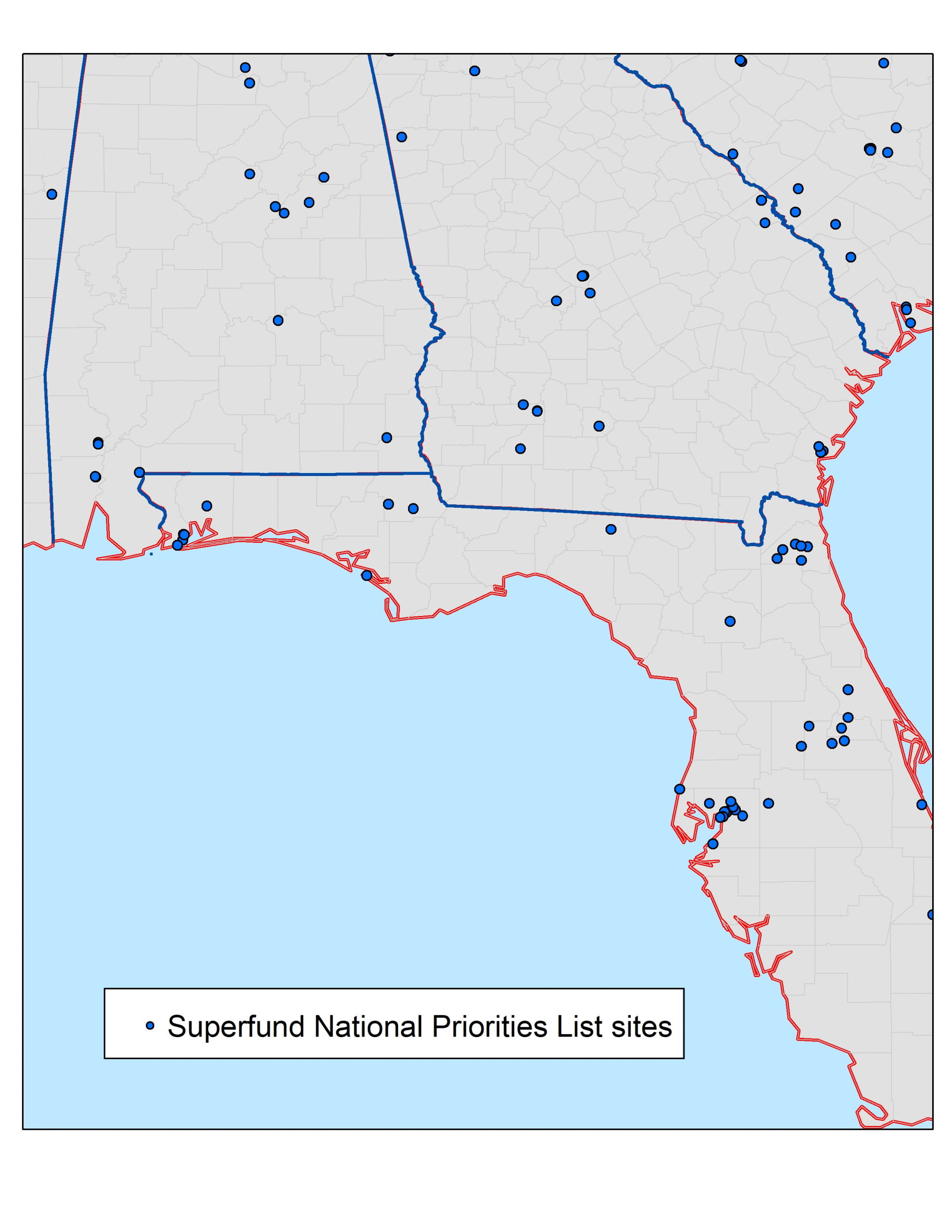Superfund Fact Sheet
Hurricane Michael Resource and Map
Attached is our fact sheet on Superfund and hurricane preparedness. It includes a map with information about sites in Florida and adjoining states that may be affected by upcoming Hurricane Matthew.

Downloads
Superfund Sites in the Path of Hurricane Michael
There are dozens of Superfund hazardous waste sites in states potentially affected by Hurricane Michael. Flooding of hazardous waste sites can result in toxic substances finding their way into flood waters and nearby communities.
Over the years, the Superfund program has evolved beyond just conducting cleanups at traditional hazardous waste sites; the Superfund program now supports response actions triggered by terrorism, natural disasters and other catastrophes. The Superfund program helped respond to the terrorist attacks on the World Trade Center, the anthrax contamination in the U.S. Senate, the devastating Midwest floods in 1993, and the initial federal response to Hurricane Katrina in 2005.
Flooding of Superfund Sites Can Threaten Human Health and the Environment
In September 2017, 13 Superfund sites were flooded in the Houston, Texas area following Hurricane Harvey. The cancer-causing chemical dioxin leaked at at least one site.
There are 53 Superfund National Priorities List sites in Florida; 38 in North Carolina, 26 in South Carolina and 16 in Georgia. Each state also has additional hazardous waste sites that are under state supervision.
During Hurricane Florence last month, at least one Superfund site was flooded and toxic chemicals were released into floodwaters, prompting the EPA to offer temporary housing to nearby residents.
Responding to Threats from Toxic Waste Sites
The EPA is currently monitoring Superfund sites and will determine if any immediate actions are needed to ensure that contamination does not endanger human health or the environment.
People living near the sites above should be cautious during the aftermath of Michael. If a person does have to wade into any floodwaters and experiences any negative health effects following the storm, the person should seek professional medical attention immediately. Anyone cleaning out homes or yards after the storm should wear gloves and masks. If government regulators announce that toxic spills are near your home, follow official instructions before returning to the area or before beginning cleanup.
Finally, the “polluter pays” policy should be restored for Superfund sites. The polluter pays principle makes the companies responsible for producing pollution responsible for paying for damage done to the site. Congress allowed this tax to expire in 1995. By 2003, Superfund’s coffers were empty. As a result, orphaned site cleanups are now financed through taxpayer dollars. The loss of industry tax revenues led to a decline in performance. In 1999, for example, the EPA cleaned up 89 orphaned sites. By 2009, the number dropped to 19 per year.
The EPA’s ability to remediate these sites is significantly hampered by a lack of funding. The long-term solution to protecting people from Superfund sites during storms is to clean up these toxic sites, and the EPA needs the funding to complete these cleanups.

